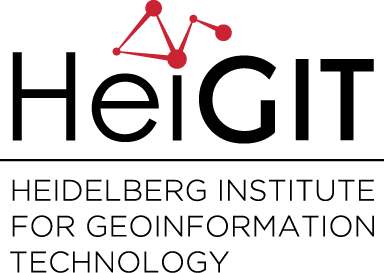Category: Research
-
Utilizing crowdsourced data for studies of cycling and air pollution
Recently, Strava, a popular website and mobile app dedicated to tracking athletic activity (cycling and running), began offering a data service called Strava Metro, designed to help transportation researchers and urban planners to improve infrastructure for cyclists and pedestrians. Strava Metro data has the potential to promote studies of cycling and health by indicating where…
-
Alexander von Humboldt PostDoc Fellowship for A. Yair Grinberger for Big Spatial Data Research in Heidelberg
Asher Yair Grinberger (Jerusalem) has been awarded a prestigious Alexander von Humboldt PostDoc Fellowship. He will join the GIScience Research Group Heidelberg later this summer to work for two years on developing theory & methods related to Big Spatial Data. We are looking forward working with him in Heidelberg. But you have the chance to…
-
10 Million Contributions: It’s time for MapSwipe Analytics!
The MapSwipe App is widely used by many volunteers who donate their time and brain capacity to find buildings or roads on satellite imagery. Just recently we counted the 10,000,000th contribution! After only 6 months since MapSwipe was launched! The outcome of these efforts are mainly used by humanitarian organisations like MSF, Netherlands Red Cross…
-
NEOHAZ goes in the second round
The NEOHAZ project will be funded by the Heidelberg Academy of Sciences and Humanities for a second phase till the end of 2018. This prolonging enables further research about the integration of implicit knowledge from non-scientists in disaster management. The findings and methods of the first part will be used within the context of a…
-
Towards evaluating the mobile crowdsourcing of geographic information about human settlements
Geographic information crowdsourcing is an increasingly popular approach to derive geographic data about human settlements from remotely sensed imagery. However, crowdsourcing approaches are frequently associated with uncertainty about the quality of the information produced. Although previous studies have found acceptable quality of crowdsourced information in some application domains, there is still lack of research about…
-
DGPF Annual Meeting 2017 – Visual impressions
Three talks from GIScience Heidelberg were given at the Annual Meeting 2017 of the DGPF (German Society for Photogrammetry, Remote Sensing and Geoinformation) on 9 March 2017. Thanks a lot to Benni, Tomás and Sebastian for the very nice talks. More technical infos on the presented research can be found in the previous blog post…
-
A Framework of Quality Assessment Methods for Crowdsourced Geographic Information: a Systematic Literature Review
Crowdsourced Geographic Information (CGI) has emerged as a potential source of geographic information for different domains. Despite advantages associated with it, such information lacks quality assurance, since it is provided by different individuals. Several authors have investigated different approaches to assess CGI quality. Some of the existing methods have been summarized in different classification schemas.…
-
Call for Abstracts “3D-Punktwolken in der Geographie” – Deutscher Kongress für Geographie 2017 (Deadline 31. März 2017)
Wir laden alle herzlich dazu ein, einen Vortragsbeitrag (Abstract) zu unserer Fachsitzung “3D-Punktwolken in der Geographie – Erfassung, Analyse und Visualisierung” (LT6-FS4) für den Deutschen Kongress für Geographie am 30.9. – 5.10.2017 in Tübingen einzureichen. Für fachliche Fragen stehen die Fachsitzungsleiter Bernhard Höfle (Heidelberg) und Martin Rutzinger (Innsbruck) gerne zur Verfügung. Online Einreichung eines Abstracts:…
-
DGPF Annual Meeting 2017 – Three presentations from GIScience Heidelberg
At the Annual Meeting 2017 of the DGPF (German Society for Photogrammetry, Remote Sensing and Geoinformation) GIScience Heidelberg will contribute three talks on 9 March 2017. Citizen Science in Schulen: Entwicklung von 3D-MicroMapping zur Klassifikation von 3D-Punktwolken (Research Project: 3D-MAPP) The Heidelberg LiDAR Operations Simulator HELIOS as a Supporting Tool for Capturing and Preserving Cultural…
-
3rd PhD Colloquium of the DGK Section on Geoinformatics and the DGPF Working Group on Geoinformatics
On 7 March 2017 the 3rd PhD Colloquium of the DGK Section on Geoinformatics and the DGPF Working Group on Geoinformatics took place in Würzburg, Germany – organized by Prof. Jan-Henrik Haunert (Bonn) and Bernhard Höfle (Heidelberg). The presentations covered a wide range of topics (e.g. 3D indoor mapping, air pollution modeling, traffic time series…


